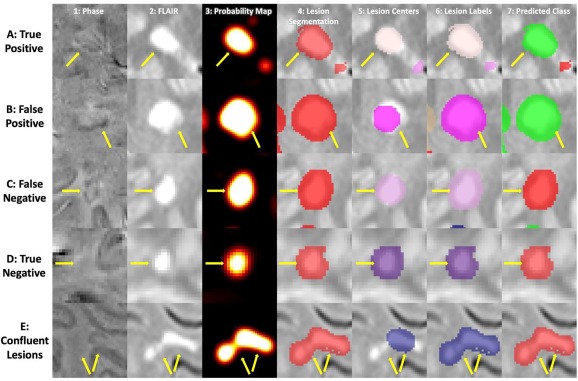
The presence of a paramagnetic rim around a white matter lesion has recently been shown to be a hallmark of a particular pathological type of multiple sclerosis lesion. Increased prevalence of these paramagnetic rim lesions is associated with a more severe disease course in MS, but manual identification is time-consuming. We present a method to automatically detect PRLs on 3T T2*-phase images.
Methods
T1-weighted, T2-FLAIR, and T2*-phase MRI of the brain were collected at 3T for 19 subjects with MS. The images were then processed with automated lesion segmentation, lesion center detection, lesion labelling, and lesion-level radiomic feature extraction. A total of 877 lesions were identified, 118 (13%) of which contained a paramagnetic rim. We divided our data into a training set (15 patients, 673 lesions) and a testing set (4 patients, 204 lesions), fit a random forest classification model on the training set, and assessed our ability to classify paramagnetic rim lesions on the test set.
Results
The number of paramagnetic rim lesions per subject identified via our automated lesion labelling method was highly correlated with the gold standard count per subject, r = 0.91 (95% CI [0.79, 0.97]). The classification algorithm using radiomic features could classify lesions with an area under the curve of 0.80 (95% CI [0.67, 0.86]).
Conclusion
This study develops a fully automated technique for the detection of paramagnetic rim lesions using standard T1 and FLAIR sequences and a T2*phase sequence obtained on 3T MR images. Lou et al. (2021)